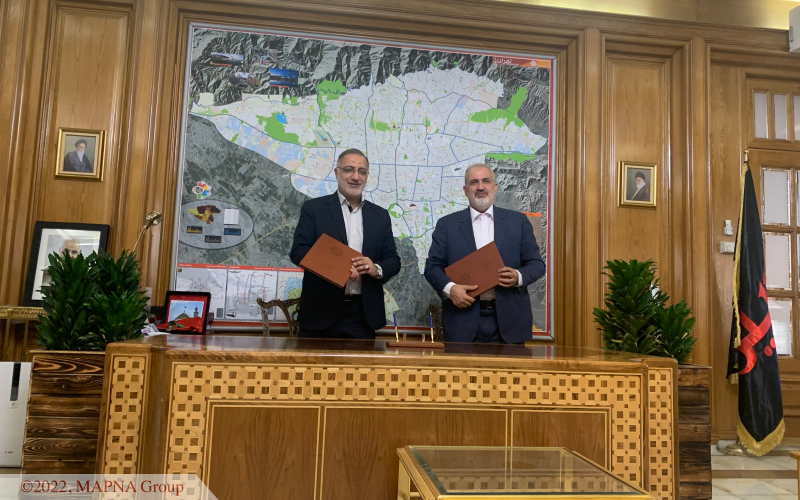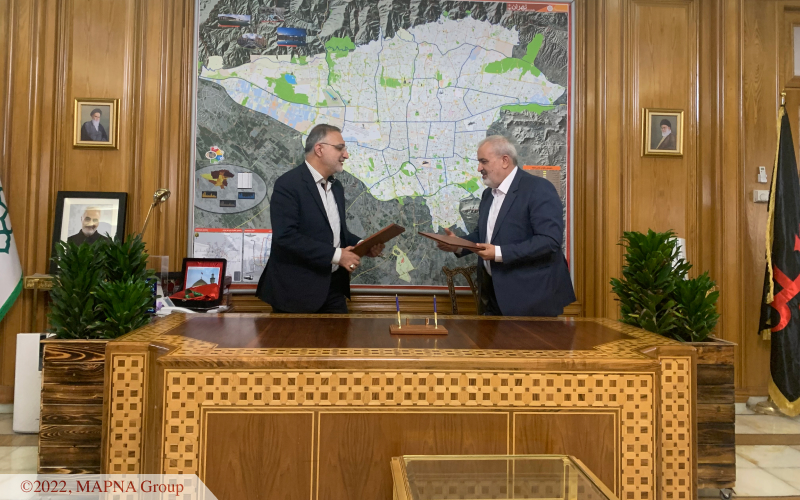MAPNA Group has signed a trilateral memorandum of understanding (MoU) on development and electrification of Isfahan’s transportation infrastructure and fleet.
The agreement was signed between MAPNA Electric & Control Engineering & Manufacturing Company (MECO), Parsan Electric Bus Production Company (commercially known as Shetab), and Isfahan Municipality, on Wednesday, September 29, 2021.
According to Isfahan Mayor Ali Ghasemzadeh, the MoU comprises two main phases: first, the feasibility studies for the electrifying the public transportation fleet; and second, the implementation of the project.
The scheme is considered an attractive solution to curb the growing mobility pollution in the central metropolis.
The CEO of MECO, Mohammad Hossein Refan, said that electrification of the urban transportation entails the ability for both electric vehicle production and development of the necessary infrastructure.
He noted that MAPNA Group has created a solid opportunity for realizing such a goal by employing professionals and university graduates in the sectors of electricity, electronics, power electronics, programming and software development, data analysis, intelligence, and system engineering.
Therefore, Refan added, the Group can leverage its trailblazing experience and substantial investment in private e-mobility to offer zero-emissions transportation solutions for neighbors.
The MoU also calls for a feasibility study for replacing Isfahan’s dilapidated bus fleet with Shetab electric buses.
Shetab has been designed and developed by Parsan Electric Bus Production Company, a joint venture by MAPNA Group and Oghab Afshan Industrial and Manufacturing Company.
The monocoque design of the body and chassis structure distinguishes Shetab electric bus from typical models. The low-deck bus has no steps and is built on a product lifecycle management platform (PLM), which allows several firms to work simultaneously on all technical processes, including detailed and master design, engineering, manufacturing, and project management.
It’s a smart vehicle with data center connectivity, energy recovery, quick charging, and a cutting-edge display system. The vehicle’s cooling system was created with Iran’s environment in mind.
The bus can travel 250 kilometers without HVAC system, and 200 kilometers while using the HVAC.
Shetab electric buses will be offered in a number of packages, each with a different battery capacity to fit the needs of each route.
The bus is equipped with a high-speed pantograph charging system, and can be charged by AC plugs.
The vehicle’s batteries can be fully charged in only 25 minutes with MAPNA’s own 600-kilowatt pantograph.
Over 60% of the Shetab electric bus is designed and manufactured domestically. MAPNA intends to achieve 100% indigenization by investing in parallel battery and engine development projects.
MAPNA Group has worked hard to take its share in developing the electric vehicle infrastructure.
The conglomerate is the first local enterprise to pave the way for the advent of EVs in the country by setting up several charging stations. The Group is working on establishing EV charging stations in all Iranian provinces.


